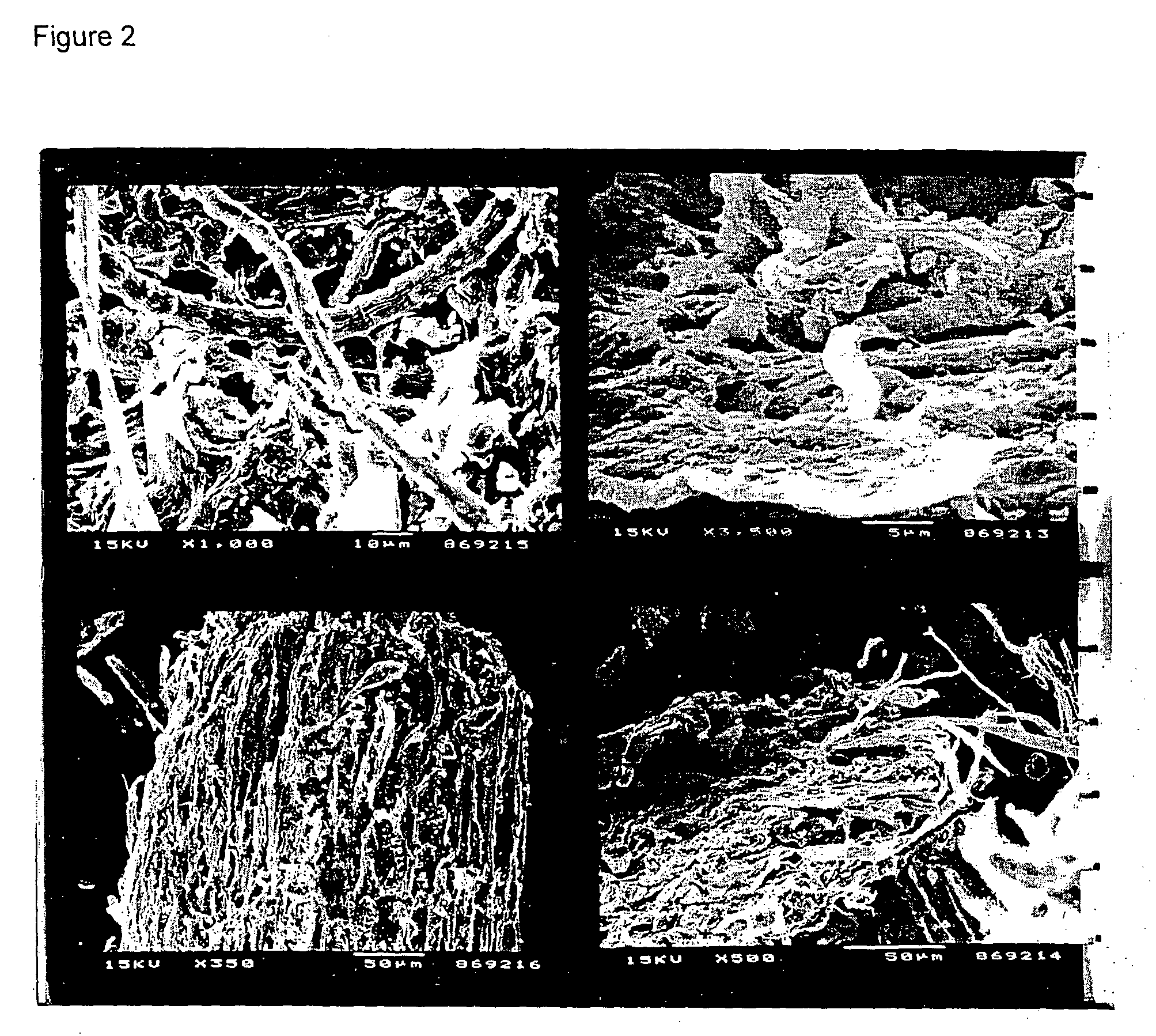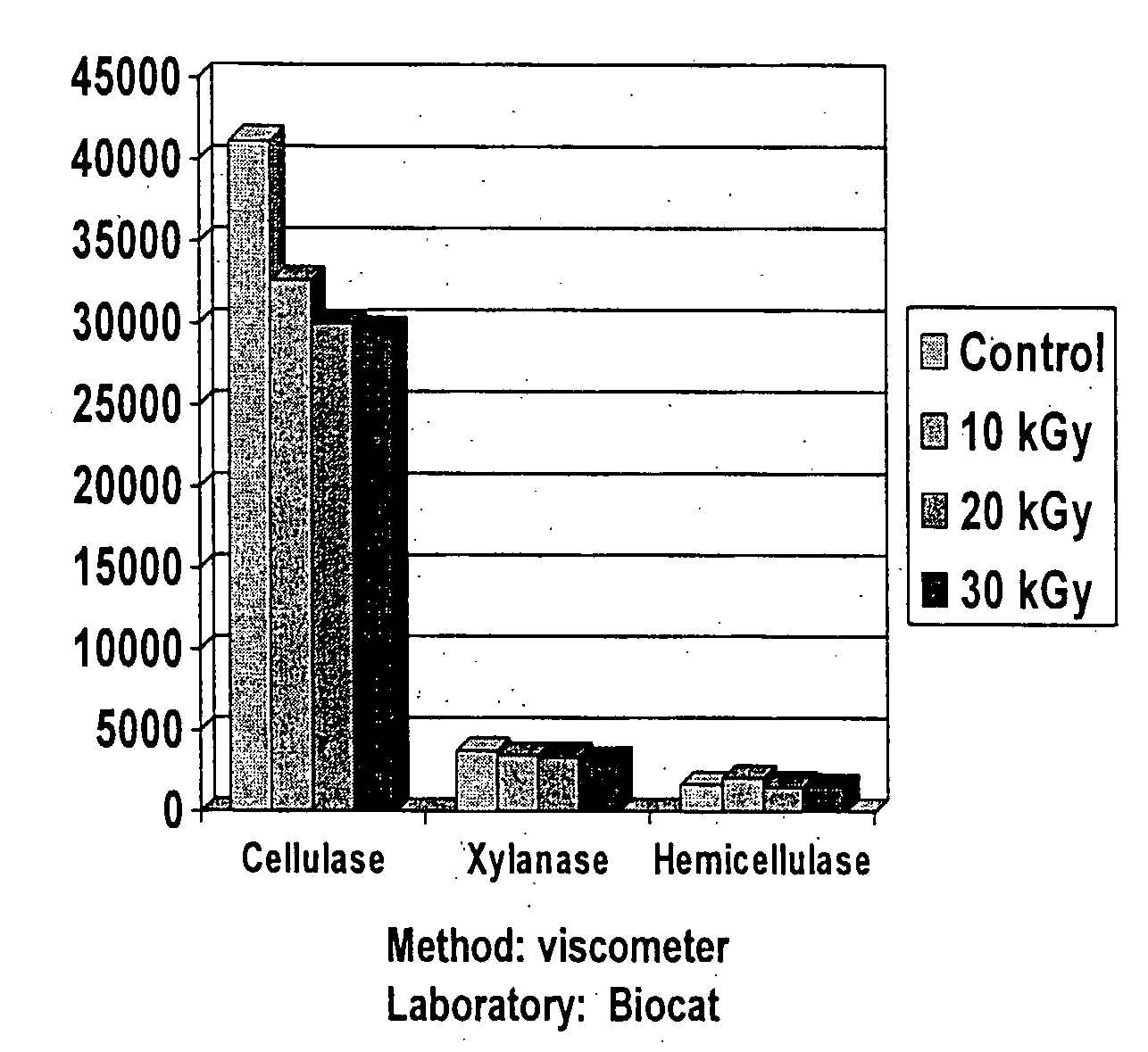Effect of radiation on cellulase enzymes
a cellulase enzyme and radiation technology, applied in the field of cellulase enzyme radiation effect, can solve the problems of no industrial method has been devised to recycle cellulase enzymes, the level of energy and capital required in this application without employing, and the results are not found to be economical
- Summary
- Abstract
- Description
- Claims
- Application Information
AI Technical Summary
Problems solved by technology
Method used
Image
Examples
Embodiment Construction
[0013]Generally, the present invention provides a method for producing fermentable carbohydrates, plant leaf protein, and lignin utilizing cellulase enzymes for producing organic chemicals, including, but not limited to, ethanol. More specifically, the present invention provides a method for producing and recycling enzymes having been treated with sufficient radiation to reduce or kill biological activity while preserving practical levels of cellulolytic activity and without destroying all cellulase enzyme complex activity, added to biomass for hydrolysis
[0014]As used herein, the term “biomass” includes any organic matter (whole, fractions thereof, and / or any components thereof) available on a renewable basis, such as dedicated energy crops and trees, agricultural food and feed crops, agricultural crop wastes and residues, wood wastes and residues, aquatic plants, animal wastes, municipal wastes, and other waste materials. Such biomass materials serve as raw materials for the proces...
PUM
| Property | Measurement | Unit |
|---|---|---|
| particle sizes | aaaaa | aaaaa |
| structure | aaaaa | aaaaa |
| surface area | aaaaa | aaaaa |
Abstract
Description
Claims
Application Information
 Login to View More
Login to View More - R&D
- Intellectual Property
- Life Sciences
- Materials
- Tech Scout
- Unparalleled Data Quality
- Higher Quality Content
- 60% Fewer Hallucinations
Browse by: Latest US Patents, China's latest patents, Technical Efficacy Thesaurus, Application Domain, Technology Topic, Popular Technical Reports.
© 2025 PatSnap. All rights reserved.Legal|Privacy policy|Modern Slavery Act Transparency Statement|Sitemap|About US| Contact US: help@patsnap.com



